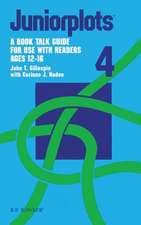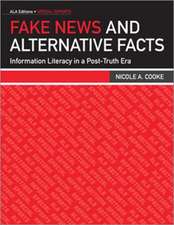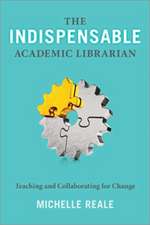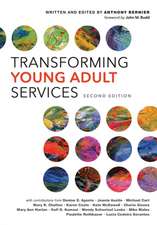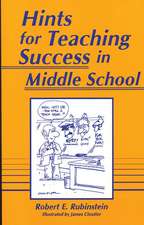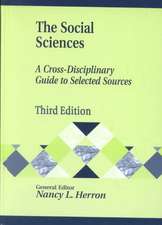Metadata for Digital Collections: How-To-Do-It Manuals
Autor Steven Jack Milleren Limba Engleză Paperback – 6 iul 2022
- learn about the concept of metadata and its functions for digital collections, why it’s essential to approach metadata specifically as data for machine processing, and how metadata can work in the rapidly developing Linked Data environment;
- know how to create high-quality resource descriptions using widely shared metadata standards, vocabularies, and elements commonly needed for digital collections;
- become thoroughly familiarized with Dublin Core (DC) through exploration of DCMI Metadata Terms, CONTENTdm best practices, and DC as Linked Data;
- discover what Linked Data is, how it is expressed in the Resource Description Framework (RDF), and how it works in relation to specific semantic models (typically called “ontologies”) such as BIBFRAME, comprised of properties and classes with “domain” and “range” specifications;
- get to know the MODS and VRA Core metadata schemes, along with recent developments related to their use in a Linked Data setting;
- understand the nuts and bolts of designing and documenting a metadata scheme; and
- gain knowledge of vital metadata interoperability and quality issues, including how to identify and clean inconsistent, missing, and messy metadata using innovative tools such as OpenRefine.
Preț: 562.26 lei
Nou
Puncte Express: 843
Preț estimativ în valută:
107.64€ • 111.89$ • 89.24£
107.64€ • 111.89$ • 89.24£
Carte tipărită la comandă
Livrare economică 06-20 februarie 25
Preluare comenzi: 021 569.72.76
Specificații
ISBN-13: 9780838947487
ISBN-10: 0838947484
Pagini: 536
Dimensiuni: 216 x 279 x 30 mm
Greutate: 1.23 kg
Ediția:Second Edition
Editura: American Library Association
Colecția ALA Neal-Schuman
Seria How-To-Do-It Manuals
ISBN-10: 0838947484
Pagini: 536
Dimensiuni: 216 x 279 x 30 mm
Greutate: 1.23 kg
Ediția:Second Edition
Editura: American Library Association
Colecția ALA Neal-Schuman
Seria How-To-Do-It Manuals
Recenzii
"The second edition of Metadata for Digital Collections builds on its past success and the ongoing efforts to resolve systemic metadata challenges faced throughout the 2010s, the 2020s, and into the future ... [It is] a truly current digital library metadata management reference source ... The extensive glossary, bibliography, and index [are] some of the best I have seen."
— Technicalities
"This large, comprehensive tome contains everything any librarian or library staff person needs to know related to what metadata is, what it does, current schema and functional elements, and practical suggestions for application, design, planning, and presentation of digital content and collections. The author is well versed on this topic, having taught it for two decades in the University of Wisconsin-Milwaukee School of Information Studies."
— Journal of Electronic Resources Librarianship
— Technicalities
"This large, comprehensive tome contains everything any librarian or library staff person needs to know related to what metadata is, what it does, current schema and functional elements, and practical suggestions for application, design, planning, and presentation of digital content and collections. The author is well versed on this topic, having taught it for two decades in the University of Wisconsin-Milwaukee School of Information Studies."
— Journal of Electronic Resources Librarianship
Notă biografică
Steven Jack Miller currently teaches continuing education courses on linked data and metadata for working professionals. In the past he taught MLIS courses on information and knowledge organization, metadata, taxonomies, cataloging, information architecture, and linked data. He wrote a textbook on Metadata for Digital Collections published in 2011, has given numerous conference presentations, and has developed workshop materials published by the Library of Congress and OCLC. He has served on committees and held leadership positions in several national-level professional organizations. In retirement he enjoys reading, language study, especially classical Greek language and literature, drawing, bicycling, travel, movies, and performing arts, especially Wagnerian opera.
Cuprins
List of Illustrations
Preface
Acknowledgments
Chapter 1. Introduction to Metadata for Digital Collections
1.1. What Is Metadata?
1.2. What Is a Digital Collection?
1.3. What Does Metadata Do?
1.4. Types of Metadata
1.5. Metadata Standards
1.6. Creating a Digital Collection
1.7. Metadata for Digital Collections
1.8. Summary
References
Chapter 2. Introduction to Resource Description
2.1. Resource Description
2.2. Local Versus Standard, Shareable Element Sets
2.3. Describing Digital Versus Original Objects
2.4. Descriptive versus Administrative Metadata
2.5. Metadata as Data for Machine Processing
2.6. Metadata Elements Commonly Needed for Digital Collection Resource Description
2.7. Summary
References
Chapter 3. Dublin Core Metadata
3.1. Introduction to Dublin Core Metadata Elements
3.2. Simple (Unqualified) Dublin Core
3.3. Qualified Dublin Core
3.4. Creation and Use of Dublin Core Metadata
3.5. DCMI Metadata Terms
3.6. Summary
References
Chapter 4. Resource Description: Identification and Responsibility
4.1. Basic Resource Identification Elements
4.2. Name, Responsibility, and Intellectual Property Elements
4.3. Summary
References
Chapter 5. Resource Description: Content and Relationships
5.1. Resource Content and Carrier Elements
5.2. Subject Content Elements
5.3. Resource Relationship Elements
5.4. Summary
References
Chapter 6. Controlled Vocabularies for Improved Resource Discovery
6.1. Improving Resource Discovery
6.2. Types of Controlled Vocabularies
6.3. Using Established Vocabularies
6.4. Creating Your Own Vocabularies
6.5. Controlled Vocabularies as Linked Data
6.6. Summary
References
Chapter 7. XML-Encoded Metadata
7.1. XML Metadata Basics
7.2. XML Metadata Record Examples
7.3. Anatomy of an XML Metadata Record
7.4. Summary
References
Chapter 8. MODS: The Metadata Object Description Schema
8.1. Introduction and Overview
8.2. MODS Elements: An Overview with Examples
8.3. MODS Records
8.4. Mapping from Dublin Core to MODS
8.5. Summary
References
Chapter 9. VRA Core: The Visual Resources Association Core Categories
9.1. Introduction to Metadata for Objects of Visual Culture
9.2. VRA Core
9.3. Summary
References
Chapter 10. Metadata Interoperability, Shareability, and Quality
10.1. Interoperability
10.2. Short- and Long-Term Metadata Viability
10.3. Metadata Sharing, Harvesting, and Aggregating
10.4. OAI Metadata Harvesting
10.5. Metadata Mapping and Crosswalks
10.6. Metadata Conversion and Processing
10.7. Example of Metadata Harvesting, Processing, and Aggregating
10.8. Good-Quality and Sharable Metadata
10.9. Identifying and Remediating Metadata Quality Problems
10.10. Five Ways to Improve Your Metadata Quality and Interoperability
10.11. Summary
References
Chapter 11: Linked Data and Ontologies
11.1. What Are Linked Data and the Semantic Web?
11.2. Linked Data and the Resource Description Framework
11.3. Linked Data in Action: The Web and Digital Collections
11.4. Ontologies: Models for Linked Data
11.5. Ontology Examples: DC, MODS, BIBFRAME, SKOS, Schema.org
11.6. Linked Data In Practice
11.7. Summary
References
Chapter 12. Metadata Application Profile Design
12.1. Metadata Application Profile Design and Documentation
12.2. Metadata Application Profile Examples
12.3. Summary
References
Appendix: Dublin Core, MODS, and VRA Element Mappings
Glossary
Acronym Glossary
Bibliography
About the Author
Index
Preface
Acknowledgments
Chapter 1. Introduction to Metadata for Digital Collections
1.1. What Is Metadata?
1.2. What Is a Digital Collection?
1.3. What Does Metadata Do?
1.4. Types of Metadata
1.5. Metadata Standards
1.6. Creating a Digital Collection
1.7. Metadata for Digital Collections
1.8. Summary
References
Chapter 2. Introduction to Resource Description
2.1. Resource Description
2.2. Local Versus Standard, Shareable Element Sets
2.3. Describing Digital Versus Original Objects
2.4. Descriptive versus Administrative Metadata
2.5. Metadata as Data for Machine Processing
2.6. Metadata Elements Commonly Needed for Digital Collection Resource Description
2.7. Summary
References
Chapter 3. Dublin Core Metadata
3.1. Introduction to Dublin Core Metadata Elements
3.2. Simple (Unqualified) Dublin Core
3.3. Qualified Dublin Core
3.4. Creation and Use of Dublin Core Metadata
3.5. DCMI Metadata Terms
3.6. Summary
References
Chapter 4. Resource Description: Identification and Responsibility
4.1. Basic Resource Identification Elements
4.2. Name, Responsibility, and Intellectual Property Elements
4.3. Summary
References
Chapter 5. Resource Description: Content and Relationships
5.1. Resource Content and Carrier Elements
5.2. Subject Content Elements
5.3. Resource Relationship Elements
5.4. Summary
References
Chapter 6. Controlled Vocabularies for Improved Resource Discovery
6.1. Improving Resource Discovery
6.2. Types of Controlled Vocabularies
6.3. Using Established Vocabularies
6.4. Creating Your Own Vocabularies
6.5. Controlled Vocabularies as Linked Data
6.6. Summary
References
Chapter 7. XML-Encoded Metadata
7.1. XML Metadata Basics
7.2. XML Metadata Record Examples
7.3. Anatomy of an XML Metadata Record
7.4. Summary
References
Chapter 8. MODS: The Metadata Object Description Schema
8.1. Introduction and Overview
8.2. MODS Elements: An Overview with Examples
8.3. MODS Records
8.4. Mapping from Dublin Core to MODS
8.5. Summary
References
Chapter 9. VRA Core: The Visual Resources Association Core Categories
9.1. Introduction to Metadata for Objects of Visual Culture
9.2. VRA Core
9.3. Summary
References
Chapter 10. Metadata Interoperability, Shareability, and Quality
10.1. Interoperability
10.2. Short- and Long-Term Metadata Viability
10.3. Metadata Sharing, Harvesting, and Aggregating
10.4. OAI Metadata Harvesting
10.5. Metadata Mapping and Crosswalks
10.6. Metadata Conversion and Processing
10.7. Example of Metadata Harvesting, Processing, and Aggregating
10.8. Good-Quality and Sharable Metadata
10.9. Identifying and Remediating Metadata Quality Problems
10.10. Five Ways to Improve Your Metadata Quality and Interoperability
10.11. Summary
References
Chapter 11: Linked Data and Ontologies
11.1. What Are Linked Data and the Semantic Web?
11.2. Linked Data and the Resource Description Framework
11.3. Linked Data in Action: The Web and Digital Collections
11.4. Ontologies: Models for Linked Data
11.5. Ontology Examples: DC, MODS, BIBFRAME, SKOS, Schema.org
11.6. Linked Data In Practice
11.7. Summary
References
Chapter 12. Metadata Application Profile Design
12.1. Metadata Application Profile Design and Documentation
12.2. Metadata Application Profile Examples
12.3. Summary
References
Appendix: Dublin Core, MODS, and VRA Element Mappings
Glossary
Acronym Glossary
Bibliography
About the Author
Index
Descriere
Complete with an updated bibliography pointing readers to essential books, articles, and web documents for deeper learning, in its new second edition this volume cements its relevance to current practitioners and students.





